
Ronstan Cam Cleats - Lighter, stronger and kinder to ropes
by Phil Anniss 15 Jan 2021 17:00 GMT
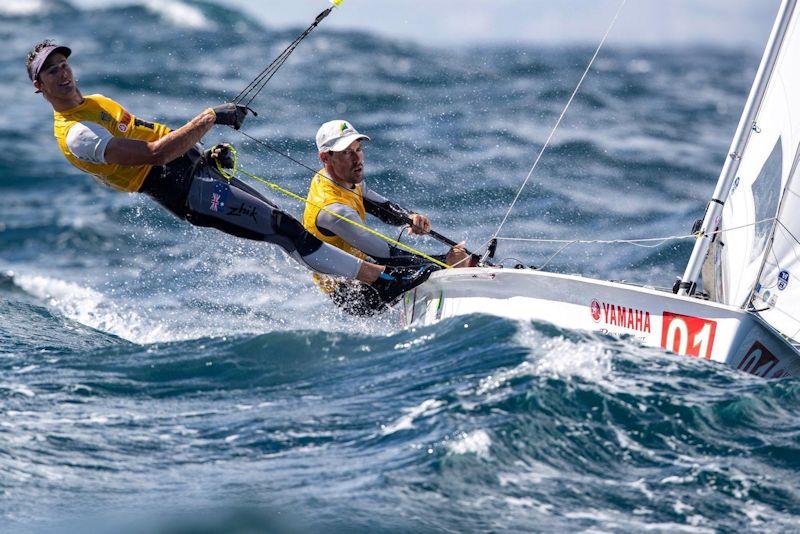
Ronstan Cam Cleats: Lighter, stronger and kinder to ropes © Ronstan
Simple, reliable and extremely versatile, Cam Cleats are a staple on boats of all sizes, either as the primary rope holding solution on dinghies, or as part of a purchase system on larger boats and yachts.
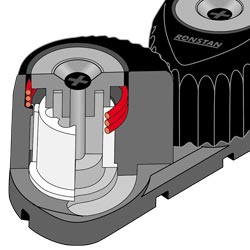
Ronstan are certainly no stranger to rope holding with an extensive range of cleats and clutches under their belt. Here we are focusing on the Ronstan Cam Cleat range.
All Ronstan Cleats feature self-lubricating slotted bearings (see image) rather than ball bearings. This reduces the risk of deforming under high load and gives superior resistance to sand and salt damage.
There are three different Cam Cleats (T-Cleats, C-Cleats and Alloy) with varying performance characteristics to ensure they have a product for most applications.
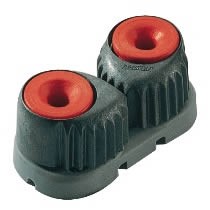
The T-Cleat
The T-cleat is a good all-round cleat and a great value solution.
Made from glass fibre reinforced cam's the T-Cleats are strong, light and corrosion free. The unique tooth profile and cam geometry are designed to do as little damage as possible to the line, without sacrificing grip.
The T-Cleat's base is made of a light, long fibre reinforced polymer. A lighter alternative to traditional metal.
There are two sizes (small and medium) catering for lines from 2 - 12mm in diameter and working loads of 75kg and 125kg respectively.
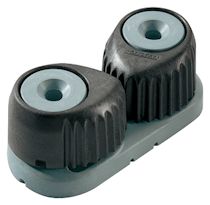
The C-Cleat
This is Ronstan's core product with an extensive range of sizes and colour options. What sets the C-Cleat apart is that the cams are reinforced with ultra-rigid carbon fibre.
Using carbon fibre instead of a more abrasive materials such as metals or glass fibre creates a non-abrasive set of teeth. These cleats are great for low to medium loads that require constant line adjustment and trimming.
The less abrasive teeth are kinder to lines and will keep your ropes lasting longer with reduced wear.
The C-Cleat's base is also made of a light, long fibre reinforced polymer.
There are three sizes: small (6 - 8mm line), medium (3 - 12mm Line) and large (6 - 16mm) with working loads of 75kg, 125kg and 230kg respectively, and come in five colour options: black, blue, green, red and yellow to allow colour coding for cluttered deck layouts.
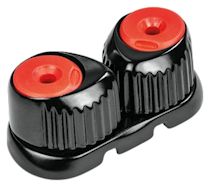
The Alloy Cam Cleat
The Alloy Cam Cleat is built for durability with high wear and corrosion resistance.
This cleat comes in medium (3 - 12mm line, 125kg working load) and small (2 - 8mm line, 75kg working load) sizes, with the small having a composite base and the medium having a rigid aluminium strength for maximum durability.
The alloy cams are great for high loads, but the compromise is that they can be harsher on lines, especially if they are being adjusted and trimmed regularly.
Cam Cleat Accessories
In addition to the base Cam Cleats, there are various accessories which can be used to optimise performance in different applications and cleat locations.
Wedge Kit
Available for small and medium cleats, the wedges can be stacked to adjust the cleat in multiples of 11° or can act as a riser.
Rope guides and fairleads
Available for the small and medium C/T-Cleat models, the rope guides and fairleads are mounted to the loaded side of the cleat to correctly align the rope into the jaws.
Saddles
The Cleat saddle is attached to the top of the cleat to keep the line close when it is not being held by the cleat. This allows the crew to trim the line from various angles but quickly cleat off once the adjustment is made. These saddles are also available in small, medium and large sizes, in stainless and stainless/composite versions.
Conclusion
The T-Cleat is Ronstan's original, affordable cleat and a great all-round option. The C-Cleat is the core range and slightly more expensive, but for ropes that are constantly being adjusted or trimmed, the C-Cleat will look after your lines for longer.
The top of the range cleat, the Alloy Cam Cleat is extremely reliable and built for longevity.
Whether you're looking for some durable cleats, cleats that are kinder to ropes or cleats with a high SWL, Upffront.com have got you covered. Check out the extensive range of cam cleats and accessories.
If you have any questions about our rope holding solutions or would like more information, you can contact